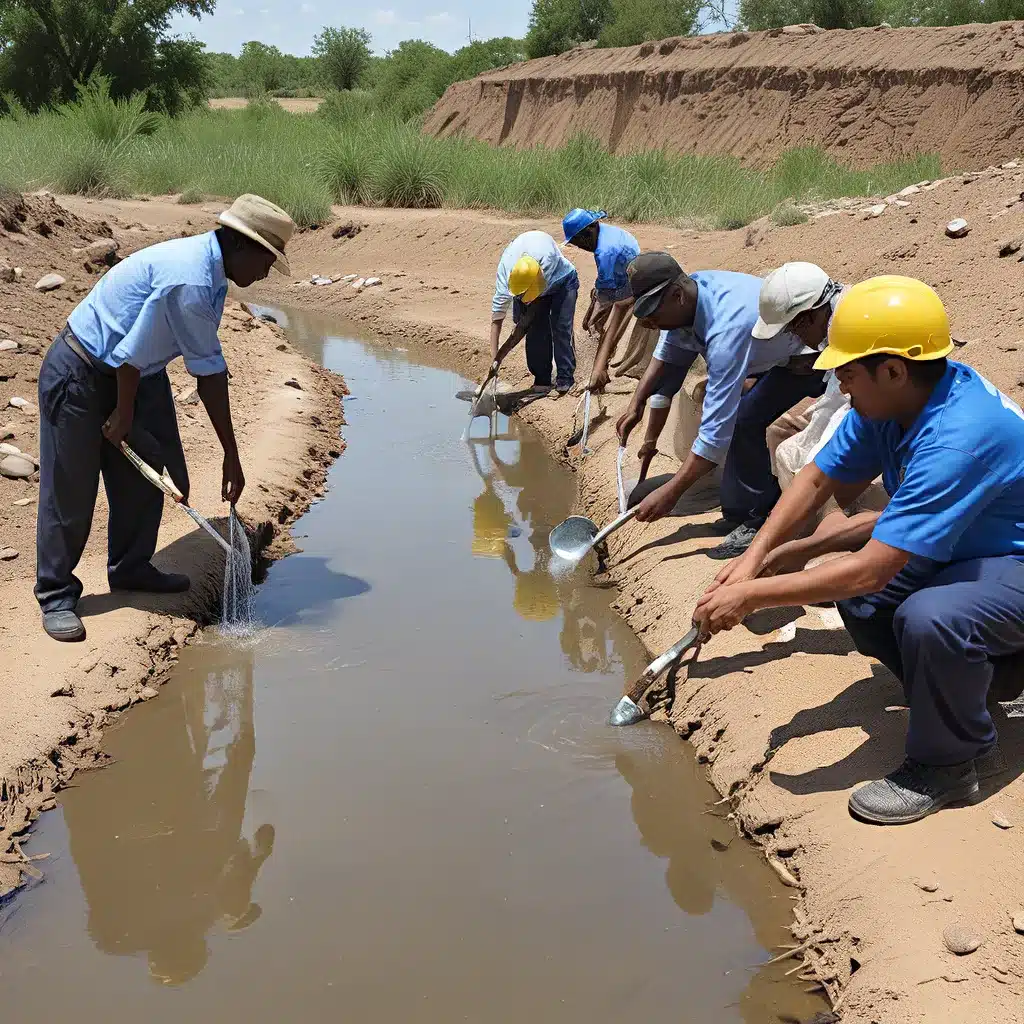
Navigating the Stormy Seas of Water Crises: A Call for Collective Action
Picture this: you’re a local emergency manager, tasked with safeguarding your community’s water supply in the face of a rapidly unfolding crisis. The skies have darkened, and the forecasts are ominous. You know a severe storm is on the horizon, one that could wreak havoc on your already fragile water infrastructure. Your palms are sweaty, and your heart races with a mix of adrenaline and uncertainty. How do you ensure your citizens have access to clean, reliable water when disaster strikes?
This is the reality faced by emergency managers across the country, who must navigate the complex and ever-changing landscape of water-related emergencies. From natural disasters to infrastructure failures, the threats to our water security are varied and unpredictable. But here’s the thing – we don’t have to face these challenges alone. By forging strategic partnerships and embracing a collaborative approach, we can weather even the fiercest storms and ensure our communities have the resources they need to stay resilient.
FEMA’s “Whole Community” approach has long championed this idea of building a diverse network of stakeholders to tackle complex problems. And when it comes to emergency water management, this approach is more crucial than ever. By bringing together local authorities, water utilities, federal agencies, and community organizations, we can create a powerful synergy that leverages the unique strengths and perspectives of each player.
Harnessing the Power of Partnerships
One shining example of this collaborative approach in action is a recent tabletop exercise conducted in central Oklahoma. Led by a local emergency manager, a National Weather Service (NWS) forecaster, and a severe weather researcher, this simulation put emergency responders through the paces of a realistic severe weather scenario. What made this exercise so remarkable was the level of detail and real-world integration it achieved.
Participants were exposed to a treasure trove of Impact-Based Decision Support Services (IDSS) graphics, providing them with a granular understanding of the evolving weather conditions. But the true game-changer was the use of NWSChat, a dedicated communication platform that seamlessly connected NWS forecasters, emergency managers, and media representatives in real-time.
This collaborative approach yielded remarkable results. The local emergency management office identified numerous areas for improvement in their communication and resource allocation strategies, while the NWS forecasters gained invaluable insights into how their IDSS graphics were being interpreted and utilized by end-users. It was a true meeting of the minds, where each stakeholder contributed their unique expertise to strengthen the collective response.
Fostering Resiliency through Shared Knowledge
The success of this exercise serves as a powerful reminder that when it comes to emergency water management, no one can go it alone. By forging partnerships and fostering a culture of shared knowledge, we can build robust and resilient systems that can withstand even the most daunting challenges.
Imagine a world where water utilities, emergency responders, and community organizations work hand-in-hand to develop comprehensive emergency plans. Where real-time data and forecasts are seamlessly integrated into decision-making processes, and where the lines of communication are always open. This is the future we can create by embracing the power of collaboration.
Overcoming Obstacles and Seizing Opportunities
Of course, building these partnerships isn’t without its challenges. Differing priorities, bureaucratic red tape, and the sheer complexity of coordinating multiple stakeholders can often feel like navigating a treacherous maze. But the payoff is well worth the effort.
As the White House’s recent National Cybersecurity Strategy emphasizes, the best way to tackle complex, interdependent problems is to leverage the collective capabilities of diverse partners. This principle holds true for emergency water management as well.
By breaking down silos, sharing resources, and aligning our goals, we can create a robust and agile response network that is prepared to handle whatever the future may hold. And in the process, we may even uncover new and innovative solutions that would have been impossible to achieve in isolation.
Charting a Course Towards a Water-Resilient Future
So, my fellow water warriors, let’s dive in and start charting a course towards a more water-resilient future. It won’t be easy, and there will be plenty of storms to weather along the way. But by working together, by leveraging our collective knowledge and resources, we can navigate these turbulent waters and ensure that our communities have the water security they need to thrive.
Who’s with me? Let’s get out there and make some waves!


